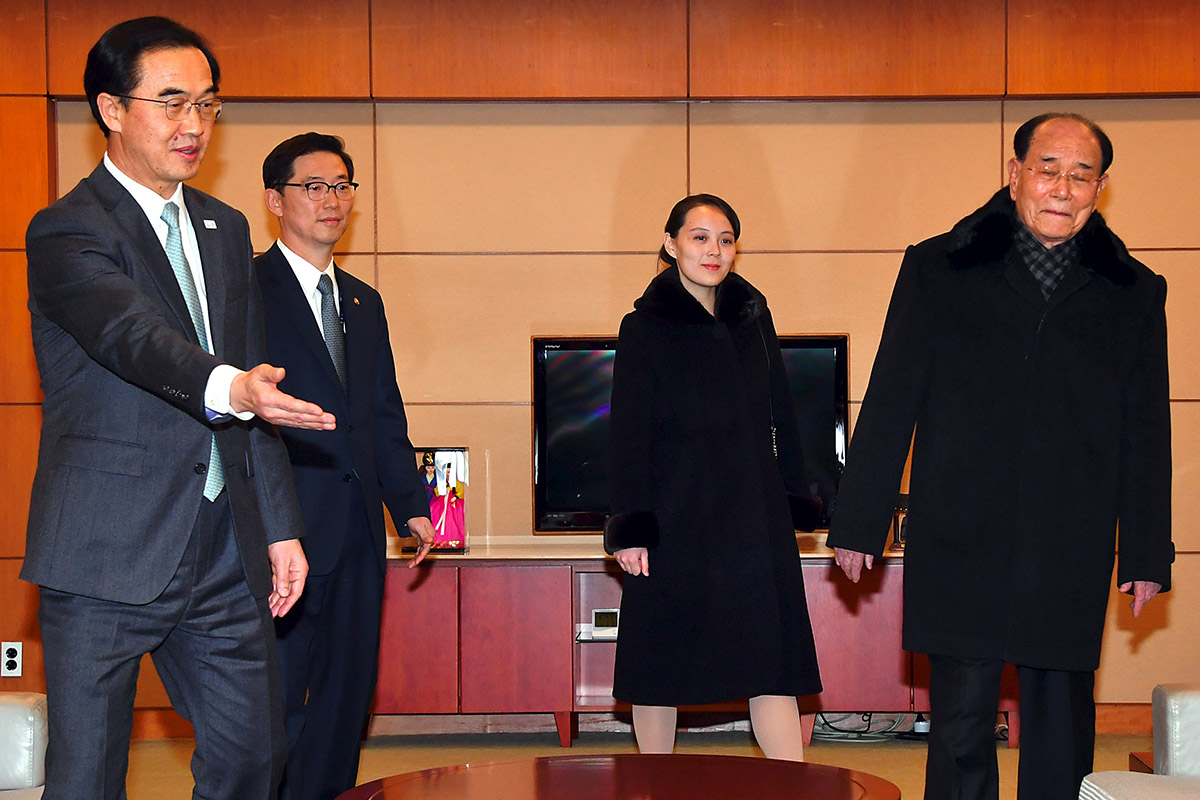The scene was mesmerising as South Korean and North Korean athletes marched together under a single flag during the opening ceremony of the Winter Olympic Games in Pyeongchang, South Korea on 9 February. The athletes were introduced simply as the ‘Korea’ contingent. The march past was followed by a presentation built along the theme of ‘Peace in Motion’ and followed by a candlelight formation in the symbolic shape of a dove and the singing of John Lennon’s 1971 hit, ‘Imagine’.
South Korea and North Korea have been at odds since the Korean Peninsula was split apart in 1945. The Korean War, which took place between 1950 and 1953 did not resolve the dispute about which Korea was in fact “the true Korea” but instead resulted in the loss of 2.5 million lives. As of today, a peace treaty has still never been signed to mark an official end to that war.
More recently, tensions have escalated in the Asia Pacific region over North Korea’s intermittent launches of ballistic missiles, the latest of which occurred in November 2017, according to BBC News. North Korean leader Kim Jong-un said in January this year that he would not scale back on production of ballistic missiles, and claimed to have a “nuclear button” on his desk.
The tension is appearing to diffuse at the Winter Olympics, where talks are being held between a North Korean delegation that includes Kim Jong-un’s sister, Kim Jo-yong, and President Moon Jae-in’s South Korean government. President Moon previously branded the Games as the ‘Peace Games’ and sees it as a potential turning point towards peace in the Korean Peninsula.
“Had it not been for the Pyeongchang Olympics, some of us might not have had the chance to be together in the same room,” he told a roomful of delegates at the reception for VIPs prior to the opening ceremony.
The talks have resulted in an invitation from Kim Jong-un for President Moon to visit North Korea, according to reporting by The New York Times on 10 February. The message was relayed through Kim Jo-yong, through whom Kim Jong-un expressed that he “…was willing to meet President Moon Jae-in at an early date and invited him to visit North Korea at a convenient date,” according to Kim Eui-kyeom, who is a spokesperson for President Moon.

President Moon has had to walk a fine line between the United States and North Korea to reach this point. His decision that South Korea would delay its annual joint military exercises with the United States came as a surprise to the latter, yet seemed to reap returns when North Korea subsequently announced that it would send athletes to the Winter Olympics after initially refusing to.
Yet South Koreans may hold a different stand from that of their president. Heejin Lee, a South Korean, interviewed by the New York Times recently, offered the viewpoint that "…what North Korea wants is a preservation of their regime. Those who support the joint Olympic team aren't disillusioned about that. They think the joint Olympic team is a tool to bring North Korea to the talking table. Talks backed with strong military unity between South Korea and the US is the answer, and efforts to form a joint team and march together at the Olympics is a great way to start."
The effects of peace could also ripple off and benefit the Southeast Asian region, with whom South Korea is aiming to establish stronger ties. South Korean president Moon Jae-In in November 2017 unveiled the 'New Southern Policy' in an effort to expand its economic influence there while curbing reliance on China and the United States.
South Korea already has strong trade ties with Indonesia, with trade between the countries amounting to US$10 billion in the first three quarters of 2017, according to reporting by Reuters. Within that period, South Korean foreign direct investment in Indonesia's economy amounted to US$1.37 billion.
Meanwhile, the Philippine Star reported that both countries are also seeking to boost bilateral trade from US$15 billion in 2017 to US$20 billion this year.
Myanmar is also looking to South Korea to invest in its infrastructure and manufacturing sectors, in order to achieve its targeted 6-9% GDP growth between 2011 and 2030. South Korea is investing US$98 million into building a logistics hub at the Shwe Lin Ban Industrial Zone in Yangon, of which Myanmar will provide the land to build on.
"On our side, we will only be offering the land," explained U Aung So in January this year. "Subsequently, the profits will be distributed accordingly," he continued.
Peace in the Korean Peninsula is arguably a peaceful solution for ASEAN too.
“ASEAN has an increasing stake in military activities with the Korean Peninsula, because of the latter’s ability to launch more far-reaching missiles,” noted Thomas Benjamin Daniel, an analyst with the Foreign Policy and Security Studies Program of the Institute of Strategic and International Studies (ISIS) back in August 2017. Yet with peace in the region, ASEAN can concentrate fully on building its economy instead.
Recommended stories:
